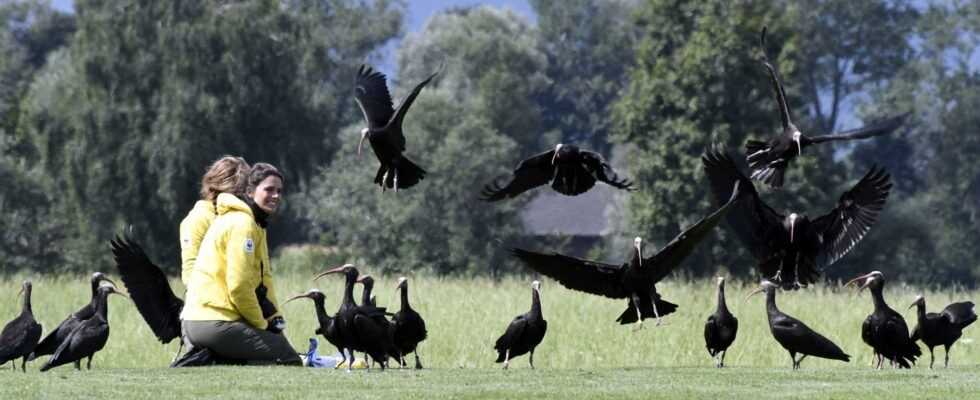There was a special spectacle yesterday on the model airfield in Radfeld. An unusual family stopped there. On the way to Italy, a flock of young birds graced Tyrol. But the animals did not come alone, but with a pilot and mums.
Ready-Set-Go! The starting shot for this year’s bald ibis emigration was given yesterday at 9.30 a.m. in Salzburg. With 28 young birds and their foster mothers Helena Wehner and Katharina Huchler in tow, pilot Johannes Fritz set out to accompany the bald ibis over around 800 kilometers to Italy. The reason and goal of the impressive campaign is to make the bird species at home again and to save it from extinction.
But why do you need a flying machine as a leader? The northern bald ibises themselves are mainly kept in zoos. They have a motivation to migrate, but they lack the necessary knowledge to find their way in the wilderness. But they follow their foster mothers Wehner and Huchler everywhere and are thus put on the right path.
The birds are piloted to Italy. The whole squad flies from Seekirchen in Salzburg to the WWF reserve Laguna di Ortobello in Tuscany. Six to seven flight stages with intermediate stops and rest days are planned. Yesterday one of the stopovers took place at the model airfield in Radfeld in Tyrol. And the “Krone” was there!
Perfect landing at the airfield in Radfeld
What the onlookers saw there was a spectacle. Two aircraft with yellow paragliders accompanied by a helicopter and then the birds in perfect flight formation. First, the ultralight aircraft made contact with the ground with two pilots and the foster mothers, then the flock of bald ibises circled a few laps around the airfield before they finally started to land.
The feathered friends are always well behaved! The young birds hardly ever leave the foster mothers’ side. But immediately after arrival it was feeding time.
But why migration at all? Club leader and pilot Fritz explains: “The origin of the whole action lies in a research project. The bald ibis is threatened with extinction due to hunting in Central Europe and changes in the climate. We have now built an independent, viable population within seven years. “
Within two months, 22 training flights with a radius of 75 kilometers were carried out. Formation flying was also practiced diligently. Interesting detail on the side: by flying in formation, the young birds save 20 to 25% energy – no disadvantage on such a long journey.
Katharina Wagner, Kronen Zeitung
